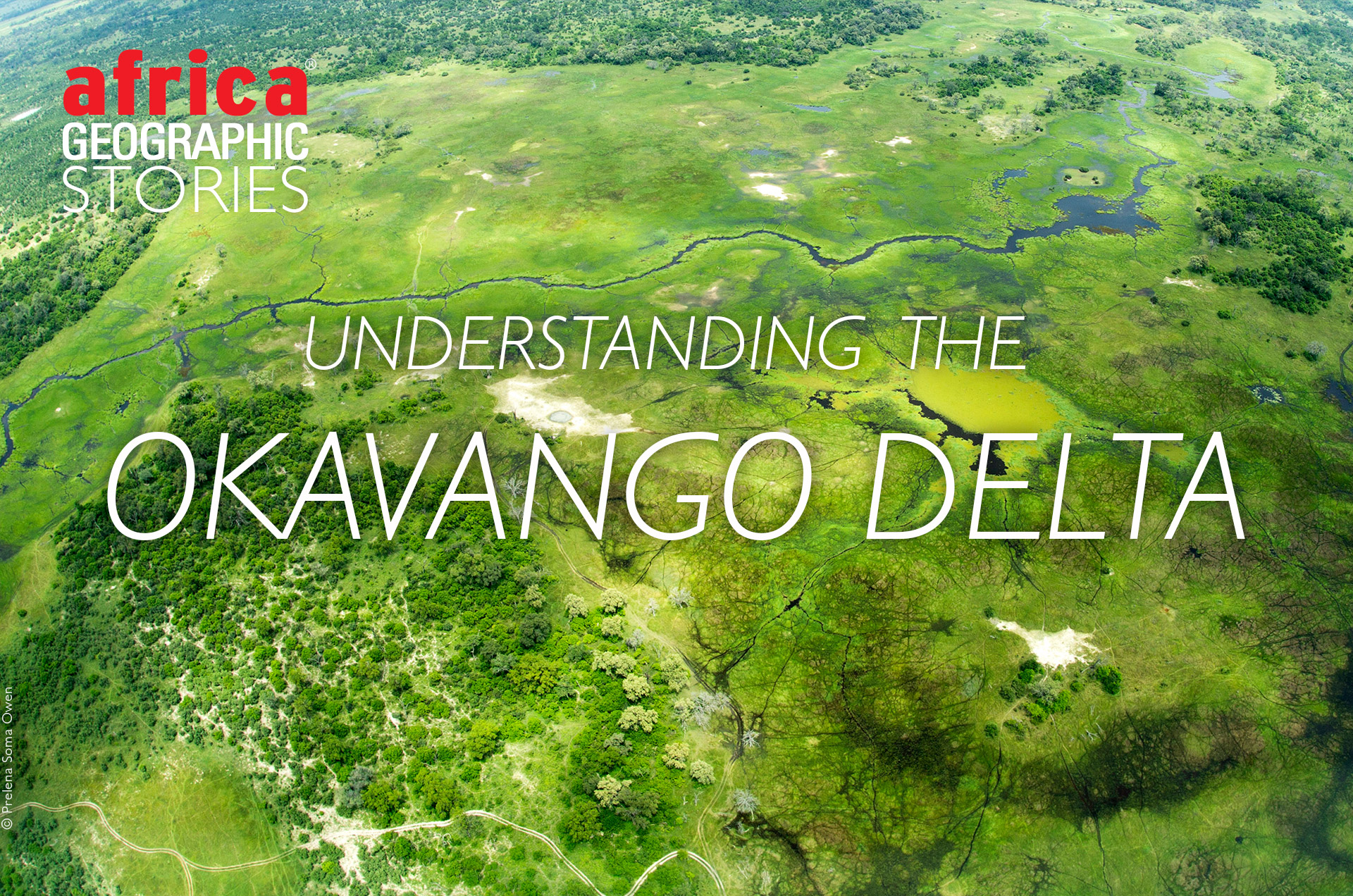
Understanding the Okavango Delta

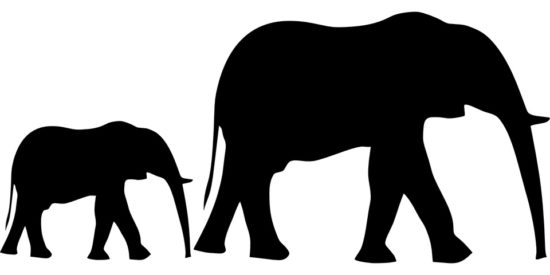
The Okavango Delta emanates in the highlands of Angola, where the mighty Okavango River begins as just a trickle before gradually becoming the third largest river in southern Africa that flows for over 1,600km to reach inland Botswana. Around 60,000 years ago, the river deposited water into Lake Makgadikgadi, a paleolake believed to have covered over 100,000km² of Botswana’s interior. At a time when we were just dragging ourselves into the Later Stone Age, most of southern Africa was rattled by severe seismic activity that created a tectonic trough. The earthquake (or earthquakes) must have come as something of a shock to the residents of the area, but also happened to change the shape of the earth’s crust to block the Okavango’s original path almost entirely.
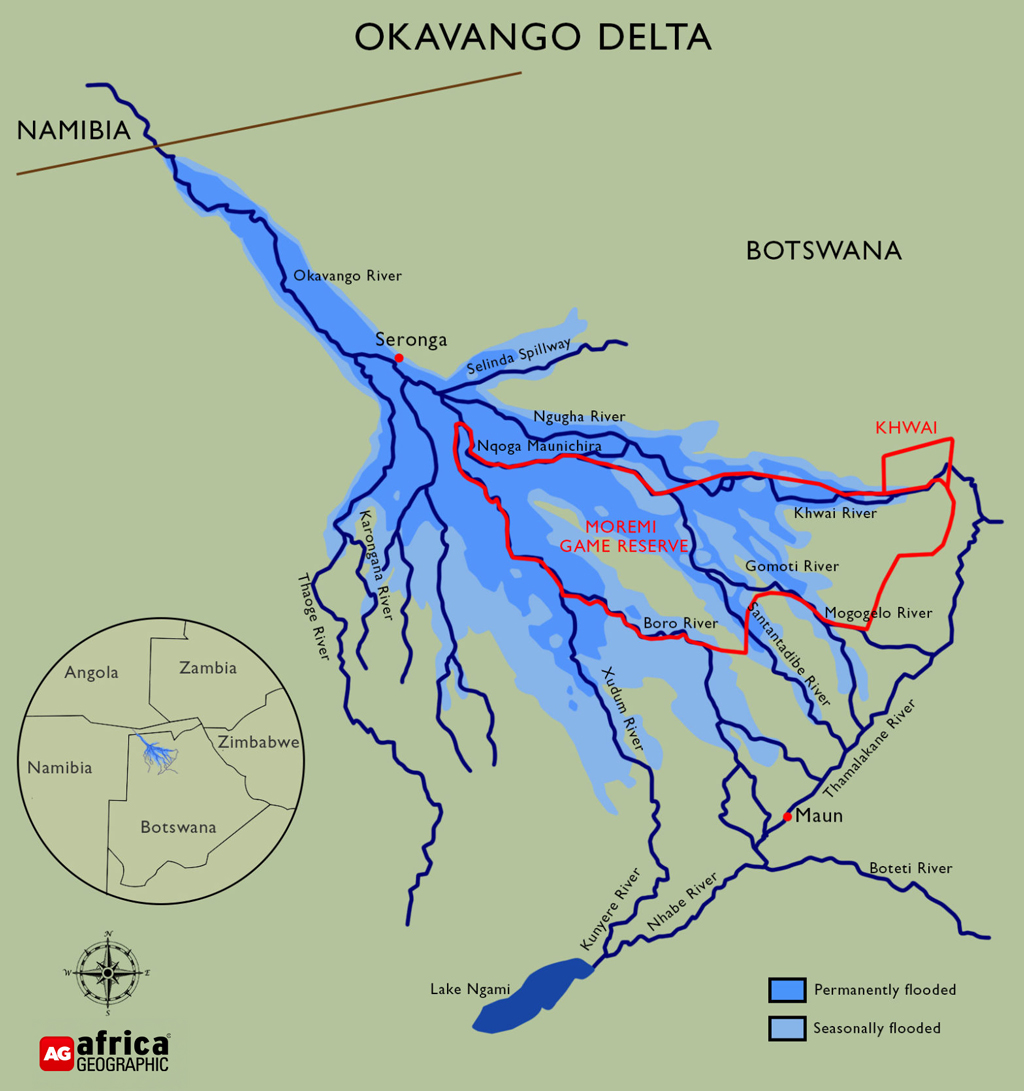
The river water had nowhere to go and poured relentlessly into the Kalahari Desert, creating the endorheic basin of the Okavango Delta – one of the largest inland deltas in the world. Today, the Okavango River continues to discharge around 11km³ of water every year into the swamps that spread across an area of 6,000km²–15,000km² (depending on the time of the year). One of the Seven Natural Wonders of Africa and a UNESCO World Heritage Site, the Okavango Delta – including Moremi Game Reserve in its centre and Khwai on the eastern fringes – is an enormous oasis home to a wide variety of wildlife, and its tourist value contributes around 13% of Botswana’s GDP.


An alluvial fan
The Okavango River flows into Botswana at the small village of Mohembo before fanning out into a combination of twisting channels and lagoons lined by thick beds of papyrus and reeds along the Delta floodplains, initially through a comparatively narrow area known as the Panhandle. The swamplands of the Okavango are permanently flooded, but the bog surrounding them fills seasonally, depending on water levels. The Delta layout is somewhat dynamic. While the water may follow different routes depending upon changing sandbanks and blockages, the Delta waters will fill up main channels, then secondary channels, and eventually overflow and saturate floodplains. Forces of scouring, sediment deposition, animal activity, and vegetation blockages (and over a more extended time period, formation of tree islands) cause channels to become wetter or progressively drier. So some areas get wetter over time, and some get drier. The wetter areas may spill over into irregularly flooded areas, or even flood woodlands during high floods.
Furthermore, the tectonic trough responsible for the formation of the basin of the Delta is relatively flat. Still, there are many islands of various sizes (the largest being Chief’s Island) and salt islands with barren white centres that are too saline for plant growth.
The waterways around these islands are one of the Okavango’s biggest drawcards, and many tourist lodges overlook some of the more extensive permanent lagoons of the region. Visitors flow to the Delta yearly to explore its watery surrounds either by motorboat or on the famous and more traditional mokoro (or mekoro, plural). This canoe-like vessel allows visitors to immerse themselves (ideally not literally) in nature as they drift through the reeds. The location of each lodge will determine what activities they can offer guests at certain times of the year.

A seasonal sensation
A fundamental difference exists between Okavango’s “wet/rainy season” and the “flood season”. As described, the Okavango River’s source is in Angola, an area with a far higher average annual rainfall than Botswana. The rains in Angola are at their highest in January. Still, the increase in water levels takes months before it reaches the Delta itself, making an exploration of the Delta a seasonally variable experience. Typically, the floodwaters reach the head of the Delta around May, but the progress of the water through the dense swamps is slow, and the highest water levels are seen in June/July. The rains in Botswana are also seasonal, and, bearing in mind that nature can be highly unpredictable, the wet season begins around November. It ends around March, as the temperatures start to drop.

January: Right in the middle of the rainy season, as the foliage is at its thickest, January is not necessarily the best time of year for wildlife viewing, but the scenery is probably at its most spectacular, emphasised by dramatic afternoon thunderstorms. The Delta is also crowd-free during this time of year. The migrant bird species have all recovered from their respective travels, and most are in full breeding display mode.
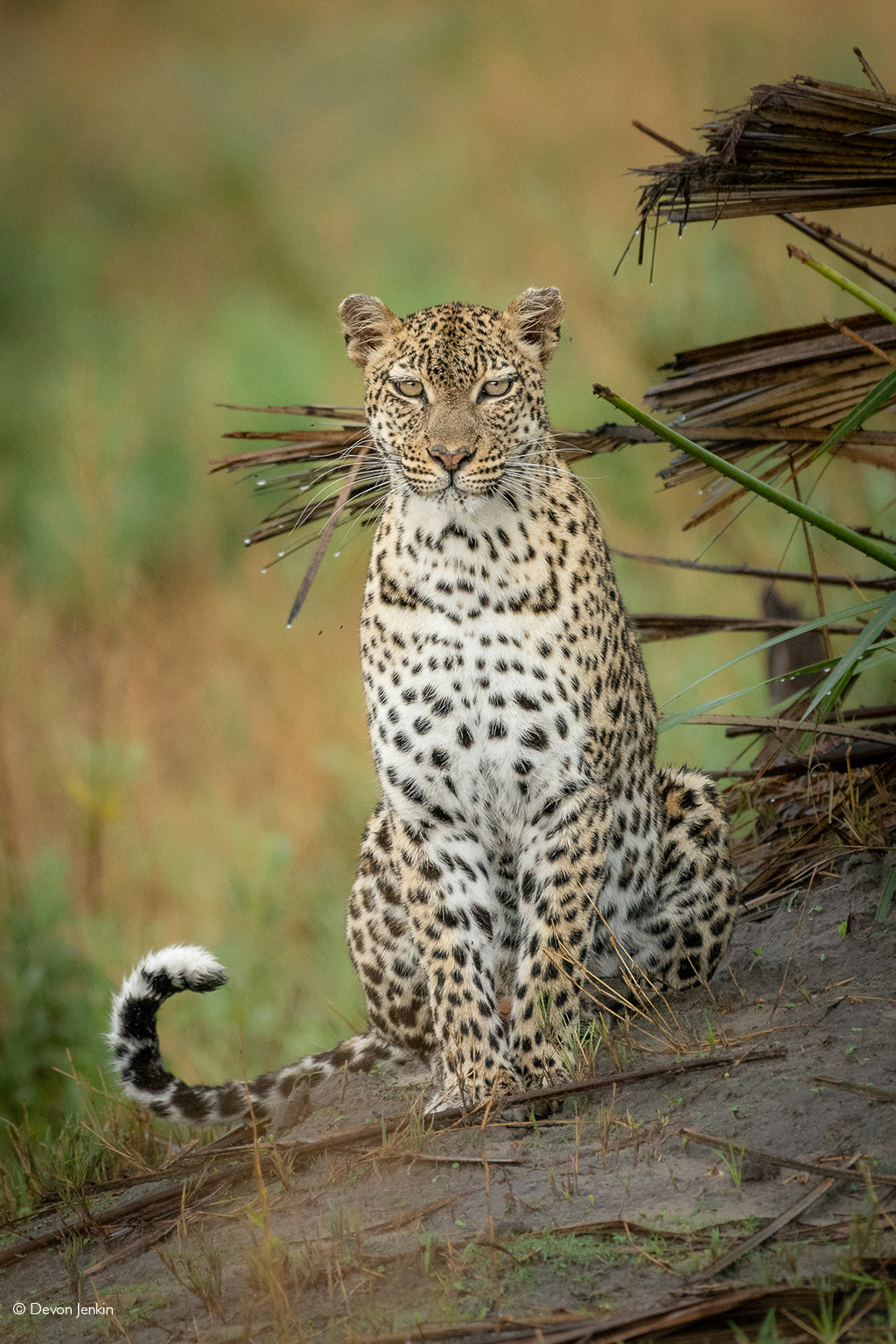
February: As in January, the Delta is verdant, lush and pulsates with life in February. The days can still be blisteringly hot, and the thunderstorms persist, making driving conditions difficult. Despite the wet conditions, the actual water levels of the Delta may still be too low for specific water activities in certain areas. February is also still a relatively quiet time in terms of other travellers, so you’ll have the plains all to yourself.
March: The days tend to become drier as March progresses, and the first winter chill can be felt in the evenings towards the end of the month. While there is still a risk of very heavy rains, the Delta is beautiful in March, the migrant birds are bulking up in preparation for their return journey, and, importantly, it is still low season, so many camps and lodges offer special rates. As grasses are relatively high during this time, it’s essential to have an excellent guide to navigate the area.

April: Though the temperatures of the nights can drop rapidly, the daytime April temperatures tend to be pleasant and warm (still hot on some days). The antelope species explode into rutting season, and the dry floodplains are dominated by fighting impala rams that have spent the rainy season preparing for this crucial moment. If the rains start early in Angola, the water levels might rise in April, and there is a feeling of electric energy in the air before the dry season begins.
May: The hot days without rain begin to dry out the surrounding seasonal waterholes in the areas around Chobe and Linyanti, while the floodwaters from upstream start to flow into the northern edges of the Delta. As a result, elephants and other plains wildlife are drawn to the Delta, and thus, the spectacular wildlife sightings of the Okavango dry season begin. As the water levels rise, water activities such as motorboating become possible throughout the region.
June: The coldest nights are recorded in June, with temperatures dropping to around 2˚C each night, but the days are pleasantly mild, especially for those not accustomed to southern African heat. June is also denning season for the region’s painted wolf (African wild dog) packs, which often results in more frequent sightings, and the thinning vegetation improves the quality of all sightings. June marks the beginning of the high season, and Okavango Delta safaris at this time should be planned well in advance.

July: July marks the height of the flood, and water levels have risen throughout the region, becoming essential for the area’s wildlife as the dry season takes hold. As rains have ceased, the vegetation begins to turn brown; trees lose their leaves, and the days are dusty. As vegetation dwindles, animals struggle to conceal themselves, and wildlife viewing enters its most productive phase.
August: The wildlife viewing in August in the Delta is extraordinary as animals tend to congregate along the edges of waterways in search of food. The days are just warming up, and the water levels remain relatively high, so land- and water-based activities are possible throughout the region. For birders, herons, storks, and egrets arrive in their hundreds to build their nests in the lagoons.
September: The temperatures begin to rise dramatically in September, and the Okavango Delta is the only source of food and water for all wildlife in the region. The water levels start to recede, and the only greenery is close to the waterways, making September one of the best months for wildlife sightings.


October: October is one of the hottest months in the Okavango. Without the relief of afternoon thunderstorms, daytime temperatures regularly peak over 40˚C . The almost non-existent vegetation makes it easy to spot predators and is never far from the channels, making them the highlight of an Okavango Delta safari in October. The flood levels have dropped considerably, and, depending on the area, some water activities may no longer be possible.
November: The arrival of the rainy season also sees the arrival of tsessebe, lechwe and impala calves. The predators have no sympathy for the vulnerability or innocence of these youngsters and take full advantage of the situation against the backdrop of the first thunderstorms of the season.
December: As the second wettest month of the year, there is always the possibility of being rained out, but the wildlife viewing remains good, and it is an exceptional experience to watch the bush rejuvenate with the relief of the rains. The water levels are low across the Delta, so this is not the best time of year for those interested in water activities, apart from some of the more central and northern lodges that have access to deeper water for most of the year.

Year-round delights
While it is undoubtedly true that the peak safari season of June to October offers the best wildlife sightings, the Okavango is always an exceptionally wildlife-rich wilderness area that offers unique attractions year-round. The low-density tourism model adopted by the Botswanan authorities means that most safari experiences in the Delta are through luxury camps and lodges, many of which have exclusive access to private concessions. This, in turn, means that the revenue necessary to conserve a key wilderness area can be maintained with minimal impact on the area itself.
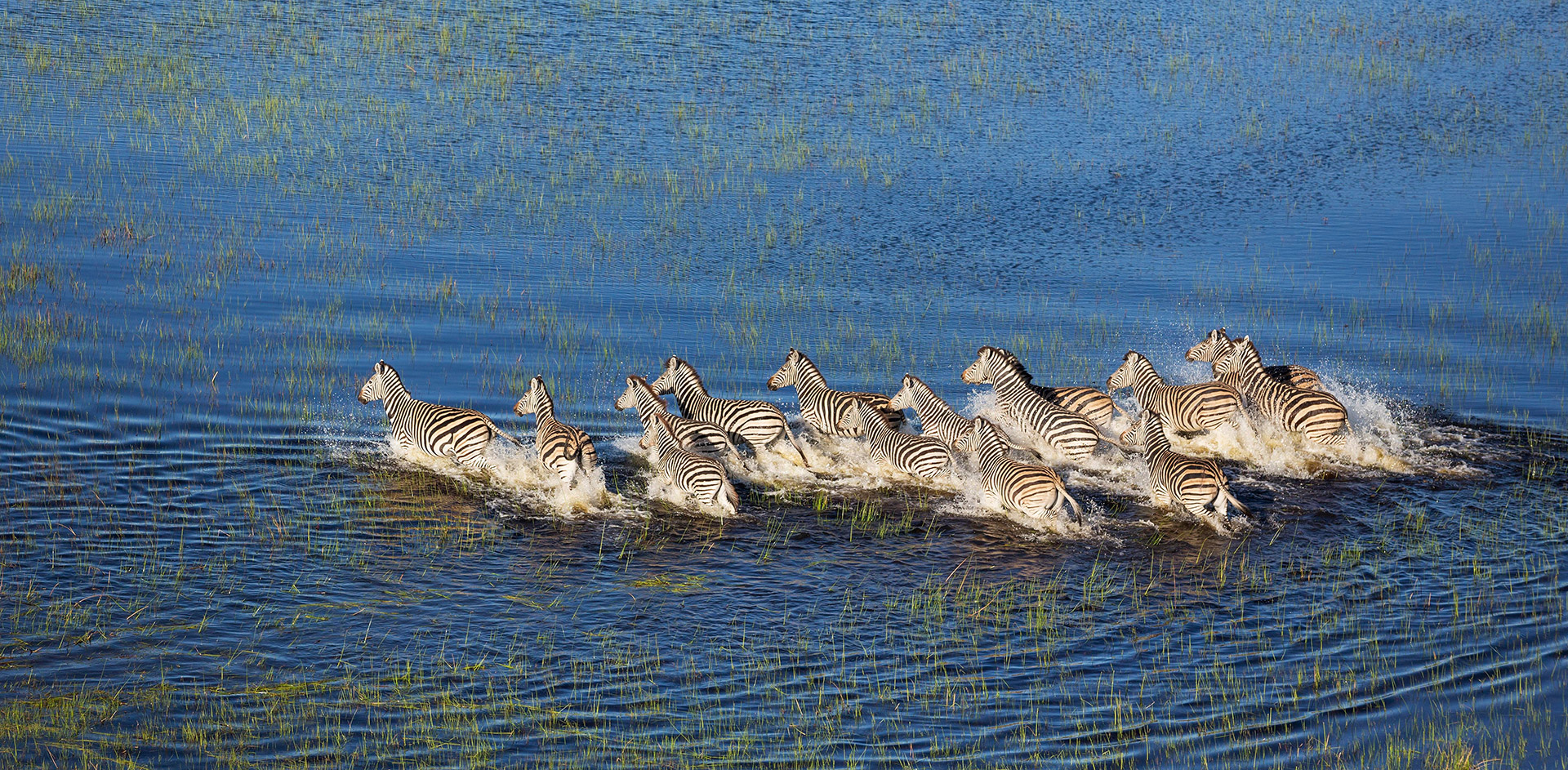
The Okavango’s wildlife sightings are extraordinary, offering anything from the Big 5 to enormous herds of red lechwe plunging through the shallow floodplains, secretive sitatunga, wild dogs, two hyena species and massive herds of buffalo and elephants drawn to the only permanent water during the dry season. The Okavango is a birder’s paradise and every year a variety of bird species nest side by side at enormous heronries – herons, storks, darters, egrets (including slaty egrets) and occasionally even pink-backed pelicans all using the same trees or matted reed-beds to breed.
As expected, the water canals are also home to many fish species, including tilapia, tigerfish, and catfish, and ‘catch-and-release’ fishing is permitted along the Panhandle. Some camps in the Delta offer fishing with seasonal restrictions. Decreasing water levels at the end of the flood season also result in the annual catfish run, where thousands of African sharptooth catfish swim back up the channels, hunting and being hunted as they go.
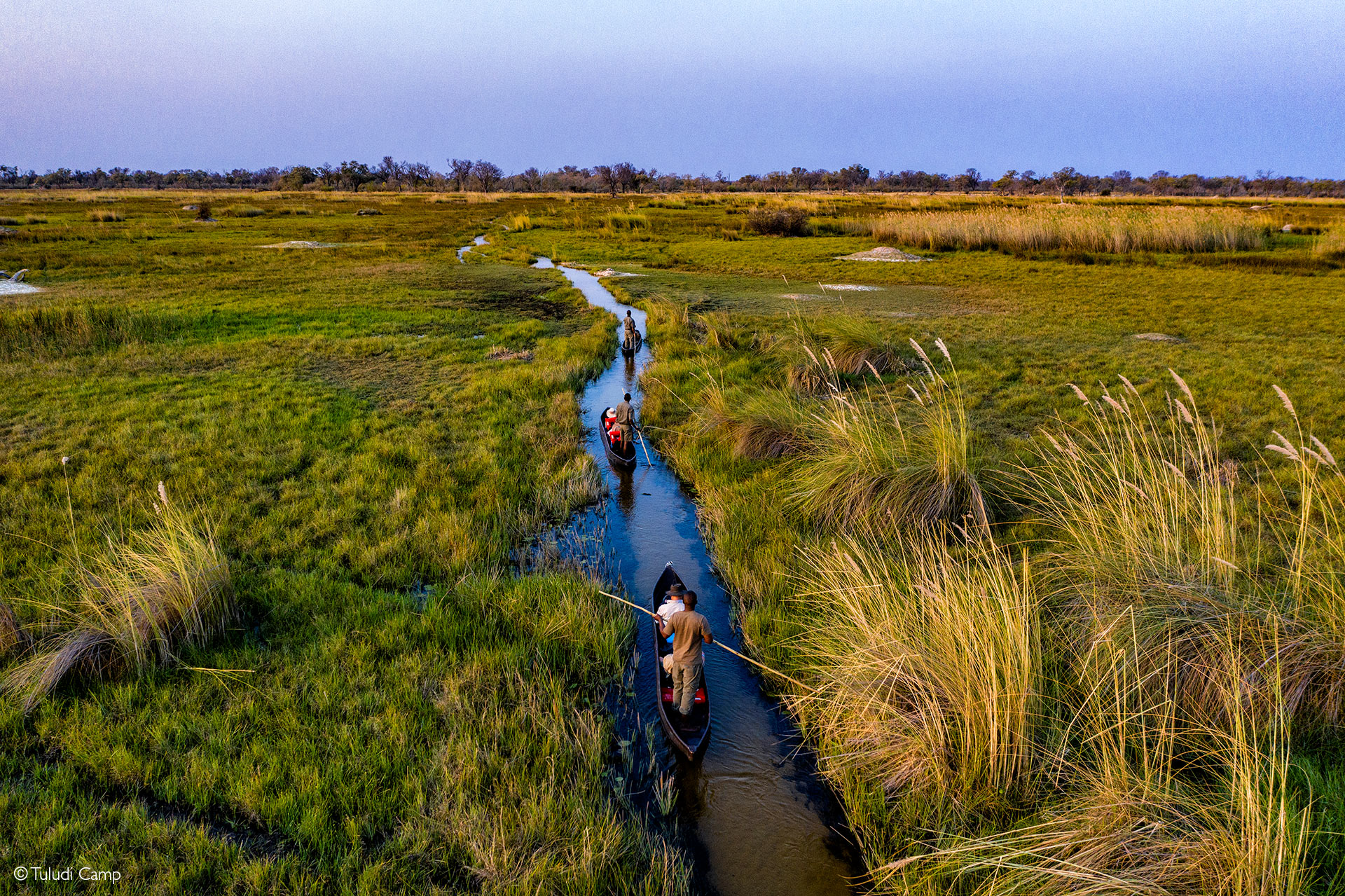
 Want to visit the Okavango Delta on safari? Browse our top Okavango Delta safaris.
Want to visit the Okavango Delta on safari? Browse our top Okavango Delta safaris.
EXPLORE & STAY
The Okavango Delta offers diverse accommodations and travel options to suit various preferences and budgets, from luxurious lodges, which provide exclusive safari experiences with elegant tented rooms and private pools, to more affordable camps, emphasising closeness to nature over opulence. For those seeking adventure, mobile camping safaris offer a unique way to explore the Delta, with options ranging from budget-friendly setups where guests assist with camp duties to more luxurious versions with full staff support.

Travelling to the Okavango Delta typically involves flying into Maun International Airport, followed by a short charter flight to your chosen lodge or camp.
Africa’s Eden
The combined natural beauty and ecological importance of the Okavango Delta has gained several affectionate nicknames, from the ‘Jewel of the Kalahari’ to ‘the Louvre of the Desert’ and ‘Africa’s Last Eden’. The Okavango Delta is a natural phenomenon created by a unique combination of geographic, climatic and biological conditions where the natural fauna and flora have adapted to an ever-changing ecosystem. For visitors to Botswana’s iconic wilderness, this means a chance to explore an almost untouched, pristine wetland system where Africa’s wild dramas have played out mostly unchanged for the past 60,000 years.
Further reading
- Plan your Okavango Delta safari: when to go, where to stay and how to experience Botswana’s iconic inland oasis in intimate camps. Check out our Okavango Delta Safari Planning Guide here
- Check out this fantastic gallery of images by Hannes Lochner, which will have you booking your Okavango Delta (Botswana) safari with us and packing your bags
- Moremi Game Reserve lies at the heart of the Okavango Delta and is the only formally protected section of the Delta. Read more about Moremi here
To comment on this story: Login (or sign up) to our app here - it's a troll-free safe place 🙂.![]()




